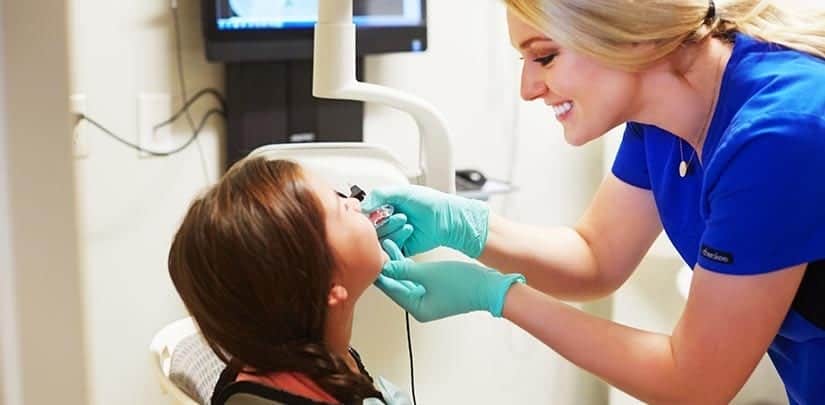Dental x-rays are an invisible beam of energy that pass through the area to produce digital black and white pictures of the mouth.
At Jenkins and LeBlanc, we use digital radiography, the latest in x-ray technology, to help monitor your child’s growth and development of their mouth, teeth, and jaw. We use the most up to date equipment and techniques with the dedication to continued education to ensure your child receives the best care available.
In digital radiography, the film replaces a flat electronic pad and sensor. The digital x-rays hit the pad the same way they hit the film in older equipment, but instead of waiting for the film to develop, the image directly sends to a computer screen, which also allows for closer examination.
Along with the benefit of low radiation exposure, this system also allows the image to be stored digitally and quickly accessed to compare with previous images.
Why are Dental X-Rays Important for Children?
Due to a child’s continual growth and development, the American Dental Association recommends beginning x-rays at the age of two and continuing every 6 to 12 months.
The x-ray is then used to help diagnose problems inside the teeth that can’t be seen to the naked eye, such as tooth decay, damage to the structure of the mouth and dental injuries.
What are The Different Types of X-rays?
Periapical
A periapical image is used to look at one or two teeth at a time. While similar to a bite-wing, a periapical shows the entire length of the tooth and can be used to find problems below the gum. A periapical can be used to diagnose impacted teeth, abscess, cysts and or other problems.
Bite-wing
Bite-wings highlight the crowns of the back teeth. One or two bite-wing images are typically taken on each side of the mouth and show the upper and lower teeth in one image. Bite-wings can be used to detect decay between teeth.
Panoramic
A panoramic x-ray shows the entire mouth in one image. A panoramic x-ray can detect positions of un-erupted teeth, abscesses, and other problems. They are also used for planning orthodontic treatment and to evaluate growth and development.
Have More Questions?
Your child’s experience and their dental health are important to us! If you have questions or concerns about dental x-rays for your child, please do not hesitate to call for more information or to schedule an appointment.
